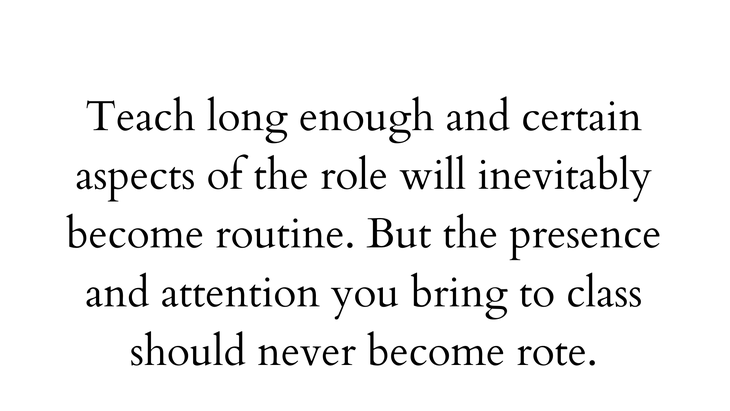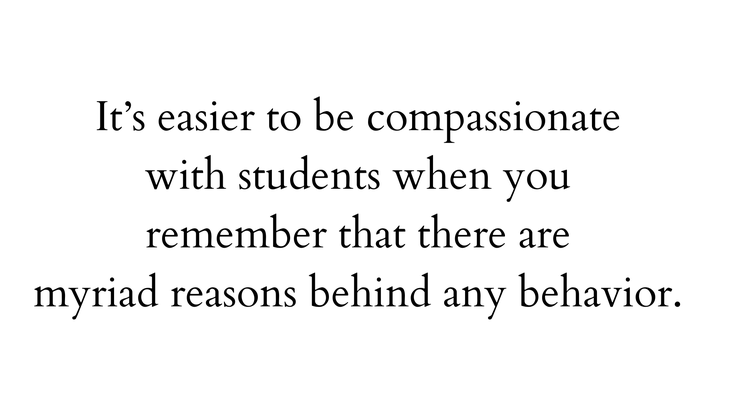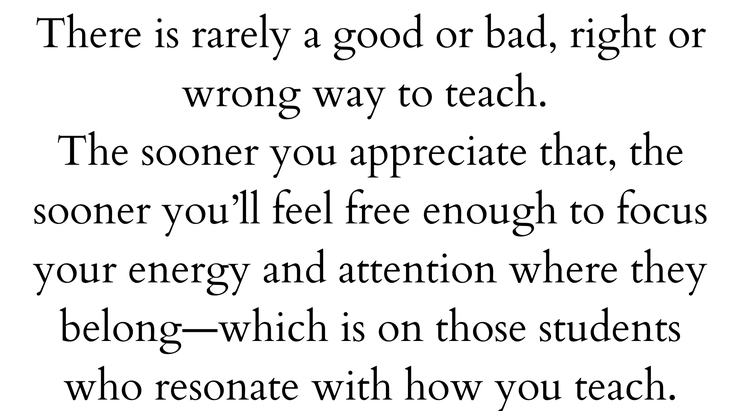“], “filter”: { “nextExceptions”: “img, blockquote, div”, “nextContainsExceptions”: “img, blockquote, a.btn, a.o-button”} }”>
Heading out the door? Read this article on the new Outside+ app available now on iOS devices for members!
>”,”name”:”in-content-cta”,”type”:”link”}}”>Download the app.
There’s an aspect of teaching that we rarely talk about in yoga. Although many of us share the questions and concerns that keep us up at night as newbie yoga teachers, and others dispense insights from thousands of hours of experience in front of students, not much is said about the mind-bogglingly complex space in between the two.
The messy middle of teaching experience is where even the most thoughtful of us get tripped up by common obstacles. And that can lead to the creation of habits—bad ones—that can be difficult to change.
Although the habits themselves may not be good, the experience of them is a useful and inevitable part of learning something new. Following are some of the sneaky stumbling blocks we all need to watch out for—and talk about with one another.
4 Bad Habits Among Yoga Teachers (and How to Avoid Them)
The only way to change behavior is to first become aware of what needs to change.
1. Not Preparing
In your first several weeks, months, or even years as a yoga teacher, you probably spent hours planning each class—researching philosophy, studying anatomy, creating and rehearsing sequences, and memorizing cues and variations.
But it’s difficult, if not impossible, to maintain that kind of intensity long-term. Despite your best intentions, once you’ve moved on from the nervous terror of your newbie stage, there may come a time when you arrive to teach without having planned anything at all.
Being willing to wing it, at least a little, can be beneficial. It creates necessary space between the class you had planned and the one the humans standing in front of you actually need.
But showing up unprepared to teach class is something entirely different. If you’ve ever taken a class where the teacher seemed to pull poses out of nowhere without any outward logic to their choices, you probably recall how confused and unsupported you felt.
A Better Habit: You don’t need to micromanage every pose and transition, memorize each word and cue, or offer something complex or elaborate in order for your teaching to influence students. But you should still come prepared with a clear purpose.
Your students deserve an intentional experience. Even if that means paring back to a go-to sequence that’s simple and familiar, you should arrive with a clear purpose and offer several touch points through class to support that theme or experience.

2. Not Being Present
When you’re newer to teaching, it can take every ounce of your attention to facilitate class. Between cueing your sequence, sharing prop and pose options, observing alignment, managing the lights and temperature, and desperately trying to leave space for quiet, there’s not a lot of capacity to think about anything else.
But somewhere along the line, without you even noticing, things start to become easier. It may not seem like it when you start teaching. But eventually you repeat the process enough times that some aspects of teaching no longer require your full and complete attention. Some aspects will even become routine.
Next thing you know, you may find yourself going through the motions as your attention strays to consider your dinner options (leftovers or takeout?), your to-do list (stop at the grocery store on your way home?), even your reflection in the mirror (time for a haircut?).
A panicky level of focus is not a prerequisite for being a great teacher. Feeling more relaxed makes you feel more approachable and definitely makes you more able to take in the subtle signals your students send. But if you find yourself checking messages on your phone during class or just generally checking out, you’ve probably relaxed a little too much.
A Better Habit: It can help to remind yourself before every class that your students expect and deserve your full attention. It could be a student’s first class ever, their tentative return following injury or illness, or the only respite they experience from a life spent caring for others, or the space they need to process grief or loss. Even if it’s just a regular Thursday night yoga class for someone, you want them to receive the full benefit of their time on the mat.

3. Getting Impatient
When you’re new to teaching, you still identify closely with the experience of being a student. That can look like being calm and compassionate with students who show up late or leave early. Or endlessly empathetic when the student with tight hamstrings refuses to use props no matter how many times you suggest blocks or even place them alongside their mat. Unfortunately, that patience doesn’t always outlast your hundredth experience of a frustrating situation.
Chances are there will come a day when instead of feeling compassion, you’ll encounter impatience. Students will frustrate rather than intrigue you. Or you’ll feel like you’ve seen it all and assume that you know exactly why they’re acting the way they are instead of being open to each situation as a chance to remain unbiased.
A Better Habit: The next time a student rushes in late, leaves early, refuses props, asks a question you’ve answered countless times before, or does something distracting during class like check their phone or hold a conversation with their friend on a neighboring mat, take a moment to try to see things from their point of view.
Maybe the new student came to the class at the only time they could land a babysitter and it was the only “me time” in their entire week. Maybe the student refuses props because they don’t know how to use them. Maybe the stressed exec leaves before the end of class because being quiet and still in a room of strangers is more than their anxiety can handle.
It can be easier to feel compassionate when you remember that there are myriad reasons behind any behavior, which you may never get to fully appreciate or understand. And there’s a reason why ahimsa (non-harming or compassion) is a key principle of yoga philosophy. But that doesn’t mean it always comes easy. It’s a practice, just like everything else we do.
Oh, and that repeated question? It might just be inspiration for your next class or workshop.

4. Judging Other Teachers
As a student, it probably never occurred to you to question your teachers. You likely never critiqued the accuracy or appropriateness of their words or wondered whether they sufficiently prepared you for the peak pose or allowed you enough of a cool down afterward. If anything, you may have tended to idolize your teachers by placing them on a pedestal of perfection.
This likely changed when you became a teacher. You were taught certain ways to do things in yoga teacher training (YTT) or immersed yourself in the opinions and debates in the broader yoga world.
Whether you’ve taken on the values and priorities of your YTT or formed your own opinions through experience, you might find yourself assessing other teachers by these standards. You begin to ask, is their teaching style safe enough? Skillful enough? Sincere enough? Spiritual enough? After all, a “good” teacher would teach the way that you aspire to teach, right?
A Better Habit: Teachers differ in their experiences, perceptions, values, and priorities. It’s a reality. It’s also absolutely necessary. Just as teachers’ styles differ, so do students’ preferences and needs. For some, a sweaty and fast-paced flow can be as transformative as the most esoteric meditation practice.
Instead of immediately writing off a teacher whose approach you don’t totally agree with, ask yourself, “What can I learn from them?” Sometimes resistance can call your attention to areas in which you need to pay attention to and move past. Other times, you learn how you don’t want to teach. Either way, stepping back from judgment helps direct your awareness squarely on your own teaching and also helps you focus on the positive.
And remember, there is a student for every teacher and a teacher for every student. A teacher whose values differ from yours might be exactly what their students need.


